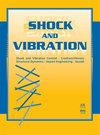不同腐蚀条件下动态点荷载试验中动态抗压强度与破碎能耗的数值关系研究
IF 1.2
4区 工程技术
Q3 ACOUSTICS
引用次数: 0
摘要
与大多数动态试验相比,点荷载试验因其对试验条件的广泛要求而在工程实践中得到广泛应用。在近海采矿工程中,围岩长期受到动荷载的冲击和各种水溶液的腐蚀。因此,研究水化学腐蚀对岩石动态力学性能的影响,对确保围岩的稳定性具有重要意义。本文利用分体式霍普金森压杆试验装置,对某大型矿山开采的花岗岩分别进行了 pH 值为 2、5 和 7 的溶液腐蚀后的大量动态点载荷和动态单轴压缩试验。以能量理论为基础,分析了试验过程中的破碎能耗,最后通过拟合分析得到了动态抗压强度与动态点荷载试验中破碎能耗的拟合公式。结果表明,用动点荷载试验中的碾压能耗来估算动抗压强度时,一定的碾压能耗(本文中该试验的最终值为 70 J)是比较准确的,在该碾压能耗下可以估算出各种腐蚀条件下的动抗压强度。然而,随着动点载荷试验中碾压能耗的变化,这种变换关系不再准确,有必要以腐蚀条件为影响因素来修正这种变换关系。这一结论可为今后工程领域获取不同腐蚀条件下岩石的动态抗压强度提供参考。本文章由计算机程序翻译,如有差异,请以英文原文为准。
Study on the Numerical Relationship between Dynamic Compressive Strength and Crushing Energy Consumption in Dynamic Point Load Test under Different Corrosion Conditions
Compared with most dynamic tests, point load test is widely used in engineering practice because of its wide requirements for test conditions. In offshore mining engineering, the surrounding rock is affected by dynamic load impact and corrosion of various aqueous solutions for a long time. Therefore, it is of great significance to study the influence of hydrochemical corrosion on dynamic mechanical properties of rock to ensure the stability of surrounding rock. In this paper, a large number of dynamic point load and dynamic uniaxial compression tests were carried out on the granite mined from a large mine by using the Split Hopkinson pressure bar test device after the corrosion of pH values of 2, 5, and 7 solutions, respectively. Based on the energy theory, the crushing energy consumption in the test process is analyzed, and finally the fitting formula of the dynamic compressive strength and the crushing energy consumption in the dynamic point load test is obtained through fitting analysis. The results show that when the crushing energy consumption in the dynamic point load test is used to estimate the dynamic compressive strength, a certain crushing energy consumption (the final value of this test is 70 J in this paper) is more accurate, and it can estimate the dynamic compressive strength under various corrosion conditions under this crushing energy consumption. However, with the change of crushing energy consumption in the dynamic point load test, this transformation relationship is no longer accurate, and it is necessary to modify this transformation relationship with corrosion condition as the influencing factor. This conclusion can provide reference for obtaining the dynamic compressive strength of rocks under different corrosion conditions in engineering field in the future.
求助全文
通过发布文献求助,成功后即可免费获取论文全文。
去求助
来源期刊

Shock and Vibration
物理-工程:机械
CiteScore
3.40
自引率
6.20%
发文量
384
审稿时长
3 months
期刊介绍:
Shock and Vibration publishes papers on all aspects of shock and vibration, especially in relation to civil, mechanical and aerospace engineering applications, as well as transport, materials and geoscience. Papers may be theoretical or experimental, and either fundamental or highly applied.
 求助内容:
求助内容: 应助结果提醒方式:
应助结果提醒方式:


